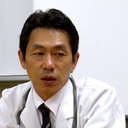[Torsade de pointes (TdP) observed during general anesthesia for cerebral aneurysm clipping in a patient with QT prolongation].
Paraules clau
Resum
A 55-year-old woman underwent emergency cerebral aneurysm clipping for subarachnoid hemorrhage (SAH). Her past and family history was unremarkable. Preoperative blood examinations were within normal ranges except for a slight decrease in serum potassium level. ECG showed a prolonged QTc interval (0.54 sec). General anesthesia was induced with propofol, fentanyl and vecuronium, and maintained with 1-1.5% sevoflurane, 50% nitrous oxide in oxygen and intermitted doses of fentanyl. About three hours after starting the operation, bigeminal pulse appeared followed by torsade de pointes. This arrhythmia returned to sinus rhythm by continuous infusion of lidocaine, and operation was performed completely. At the end of the operation, prolonged QT interval (QTc 0.71 sec) was noted. Her postoperative course was unremarkable and she was discharged on postoperative day 44. QT prolongation is a frequently seen ECG abnormality in a patient with SAH. In anesthetic management in this situation, it is important to monitor QT interval closely as well as to use anesthetics that would not exacerbate QT interval prolongation.


